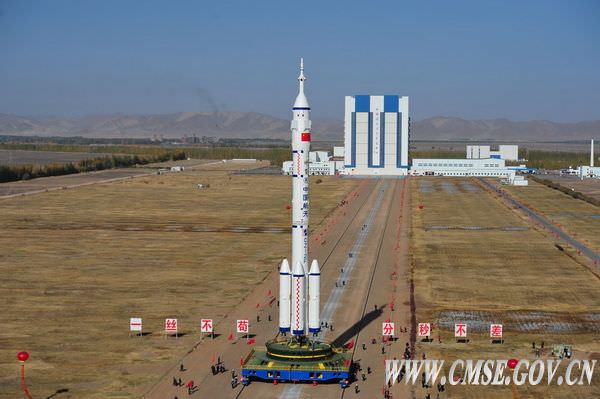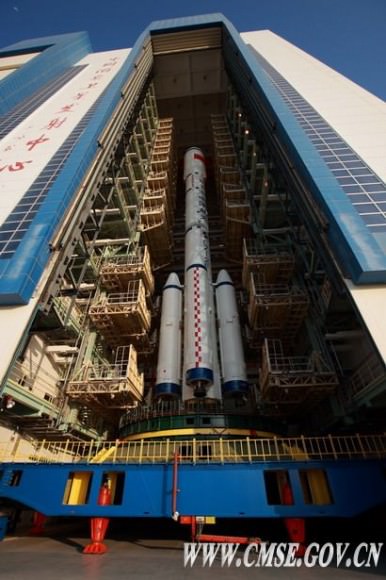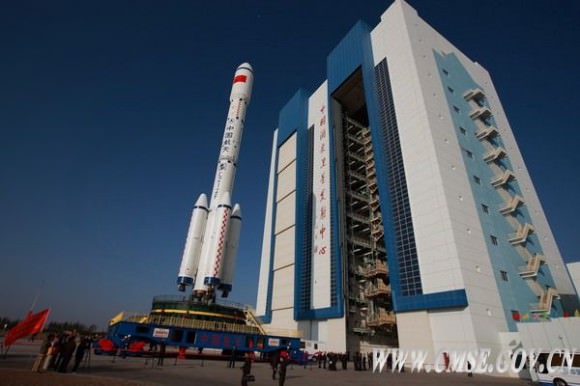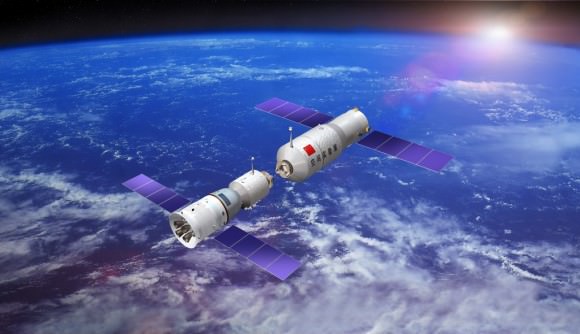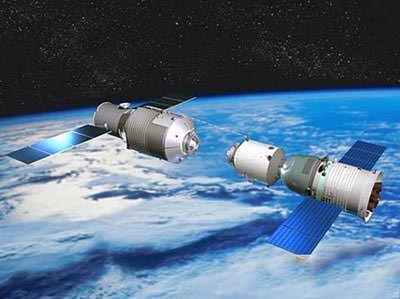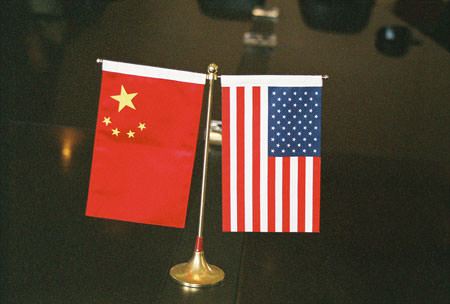[/caption]
China’s Shenzhou-8 capsule and the Long March booster rocket have been rolled out to the Gobi desert launch pad and will blast off early on November 1 bound for the 1st orbiting Chinese prototype space station – named Tiangong-1 (which translates as Heavenly Palace-1).
If successful, the Shenzhou -8/Tiangong -1 combined orbital complex will certainly be a ‘great leap forward’ for China’s space program ambitions and technological prowess while NASA’s current and future ambitions are being significantly curtailed by relentless budget cuts directed by politicians in Washington, D.C. – a fact noted by Chinese media.

The unmanned Shenzhou- 8 capsule will lift off at 5:58 a.m. local time from the Jiuquan Satellite Launch Center located in Gansu province in northwest China.
Propellants are being loaded into the upgraded Long March 2F/Y8 carrier rocket today (Oct. 31). All launch preparations and tests are proceeding on schedule according to to the China Manned Space Engineering (CMSE) office – the state run government agency responsible for China’s human spaceflight program.
Prelaunch exercises are being coordinated by the Beijing Aerospace Flight Control Center, the command center for the Chinese space program.
The fully assembled vehicles were vertically transported some 1500 meters over about 2 hours along rail tracks from China’s version of NASA’s VAB, or the Vehicle Assembly Building.
The 8 ton Tiangong-1 target module was launched from Jiuquan on September 29 and is functioning perfectly
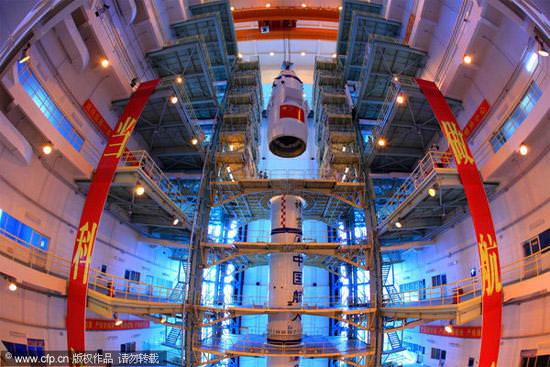
The Long March 2F booster is the tallest, heaviest and most powerful in China’s arsenal of rockets.
Tiangong-1 has been maneuvered to rotate 180 degrees in orbit in anticipation of the upcoming launch according to CMSE.
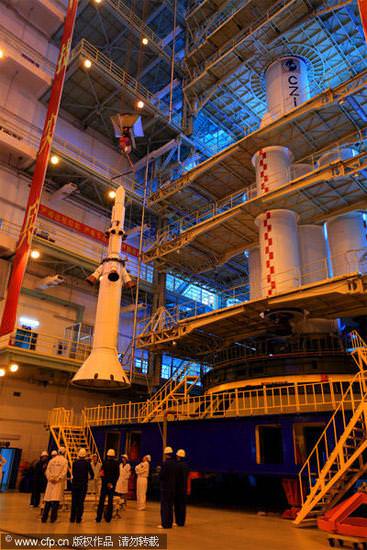
Shenzhou is China’s human rated capsule but is flying in an unmanned configuration for this flight – #8 – which will be China’s first ever attempt at critical Rendezvous & Docking maneuvers in earth orbit that are required to construct a Space Station- China’s long term goal by 2020 .
Shenzhou-8 will conduct at least two docking practice tests. After the first docking, the two ships will remain joined for about 12 days and then separate to carry out another docking.
So far China has conducted 3 manned flights, the first in 2003. Currently the US has no capability to launch astronauts to earth orbit and the ISS and is totally reliant on Russian Soyuz rockets and capsules to hitch a ride to space.
Two crewed flights to Tiangiong-1 are planned for 2012. The multi-person crews aboard Shenzhou 9 & Shenzhou 10 are likely to include China’s first woman astronaut. The chinese crews would float into Tiangong 1 from their capsules and remain on board for short duration missions of a few days or weeks. They will check out the space systems and conduct medical, space science and technology tests and experiments.
Read Ken’s related features about China’s Shenzhou-8, Tiangong-1 and Yinghou-1
Bizarre Video: China’s Tiangong 1 Space Lab Animation set to ‘America the Beautiful’ Soundtrack
China Blasts First Space Lab Tiangong 1 to Orbit
China set to ‘Leap Forward in Space’ as Tiangong 1 Rolls to Launch Pad
Phobos-Grunt and Yinghou-1 Arrive at Baikonur Launch Site to tight Mars Deadline

